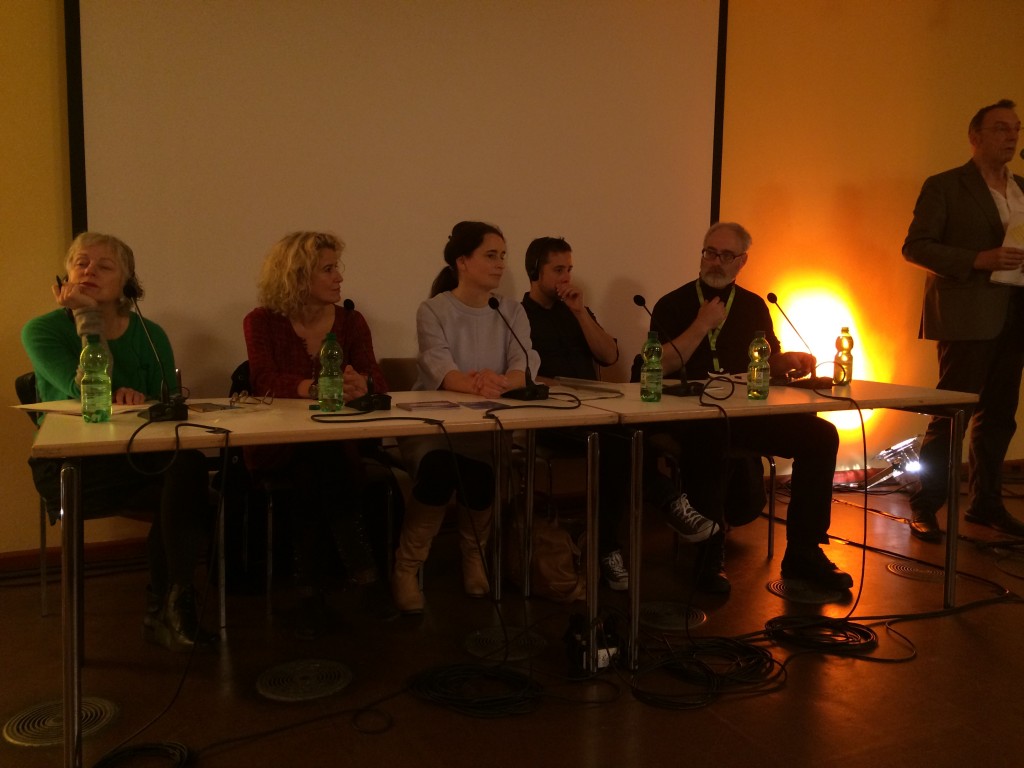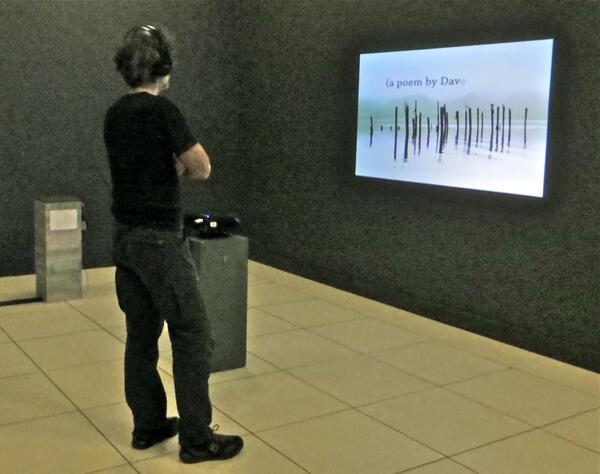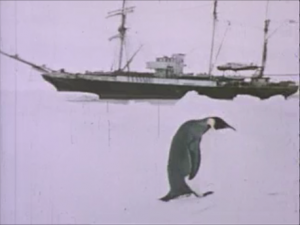I was sitting outside enjoying the fine, early-summer weather the night before last when I spotted a solitary light flashing in the treetops like a small, lost satellite: the first firefly. I watched as it drifted slowly through the darkness, advertizing its presence to an otherwise empty yard. It suddenly occurred to me that I hadn’t posted an update here about my literary accomplishments, such as they are, for a very long time. Oops.
Often what happens, I think, is that I brag about a publication on Facebook and/or Twitter, then later on think that I’ve written about it here when in fact I haven’t. That was certainly the case with the inclusion of one of my poems in an art gallery exhibition at the University of Southern Maine, Secrets of the Sea, and the accompanying chapbook, Poems For Tube-Snouts and Other Secrets of the Sea. The Lewiston-Auburn College Atrium Art Gallery did not post a copy of the chapbook to their website, for some reason, but they did send PDFs (as well as the printed version) to all the contributors. Since it was produced to distribute for free, I can’t see why they’d object to my sharing it here: Poems for Tube-Snouts and Other Secrets of the Sea [PDF].
Of the other poets in that collection, I was most pleased to be sharing space with Elizabeth Bradfield, an excellent poet whose strong grasp of science and natural history shines through her work. Bradfield is the publisher of Broadsided Press, which pairs artists and poets for monthly, free-to-print-and-distribute broadsides, “putting literature and art on the streets”—a great model. For their annual haiku year-in-review broadside in January, Bradfield asked poets to submit via open postings to Twitter. At last, a barrier to entry so low that even a writer as monumentally lazy as me couldn’t think of a reason not to submit! And as luck would have it, two of my haiku made the cut. Check it out.
Fired up by that success, I submitted to two other publications I admire, and was honored to have my pieces selected for both. “Leave-taking,” a videopoem, appeared in Issue 2 of Gnarled Oak, an online magazine founded last year by the Austin, Texas-based writer James Brush. And one of my Pepys erasure haiku was Autumn Sky Poetry Daily‘s poem for March 19. One of the unique features of that magazine is the inclusion of a note from the editor, Pennsylvania poet Christine Klocek-Lim, after each poem, explaining what she likes about it. For mine, she wrote:
Haiku is one of the most difficult forms of poetry to write because you have very little time to speak. This poem succeeds with that task, and has the added little delight of originating from within another source of words. Erasure poetry is very cool.
Last November, I was honored to have one of my videopoems screened at Videobardo, the long-running videopoetry festival in Buenos Aires, as part of a selection curated by the Canadian videopoetry pioneer Tom Konyves. Here’s the text of his presentation. I was honored that he chose my video to illustrate what has become a very popular trend in videopoetry: working with a pre-existing text.
In this videopoem, the image of a nest of snakes provides a constrained visual metaphor for each reference to “they” “these” and “them” in Salinas’ reading: “these wild and dishevelled ones” “they beg” “they can’t go on living” “help them” etc. One lasting impression that differentiates a “pure” videopoem from any other “poetry video” is that you will always associate the text you read (or hear) with the image(s) and the soundtrack it was created with. After viewing this work, how can we not help but associate this poem by Pedro Salinas with a nest of garden snakes?
Do read the rest. It’s really very flattering indeed.
Another videopoet I admire, Australian artist and musician Marie Craven, remixed one of my videopoems to very good effect. I wrote about both videos in a post at Via Negativa: “Native land.”
Last but not least, I contributed a short essay to a new German website, Poetryfilmkanal: “The Discovery of Fire: One Poet’s Journey into Poetry-Film.” Believe it or not, I was trying to express myself as clearly as I could. (There’s a reason why I mostly stick to poetry.) The website administrators have plans to release annual print and PDF versions of the magazine portion of the website, so my deathless prose about videopoetry and poetry film may find its way into dead-tree media as well.
I think that’s everything; my apologies to anyone I may have overlooked. It’s not that I don’t enjoy placing poems and videos hither and yon, it’s just that I derive most of my satisfaction as a writer from my daily posts at Via Negativa. I’m still beavering away on Pepys Diary erasures, and have yet to miss a single entry. (Last night, I had the quality problem of trying to decide which of three separate erasure poems found in that day’s diary entry was the best.) And I’m excited about a new series at VN called Poetry from the Other Americas, which is giving my translation muscles a much-needed workout. As for fireflies and their lonely writer’s lamps, I just remember that classic haiku of Buson’s:
All this study—
it’s coming out your ass,
oh firefly!





